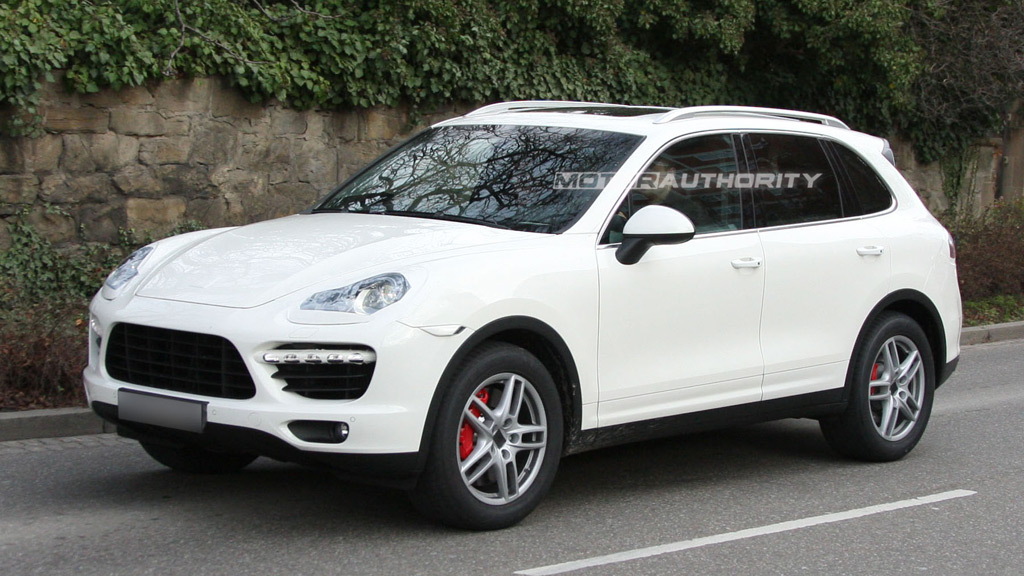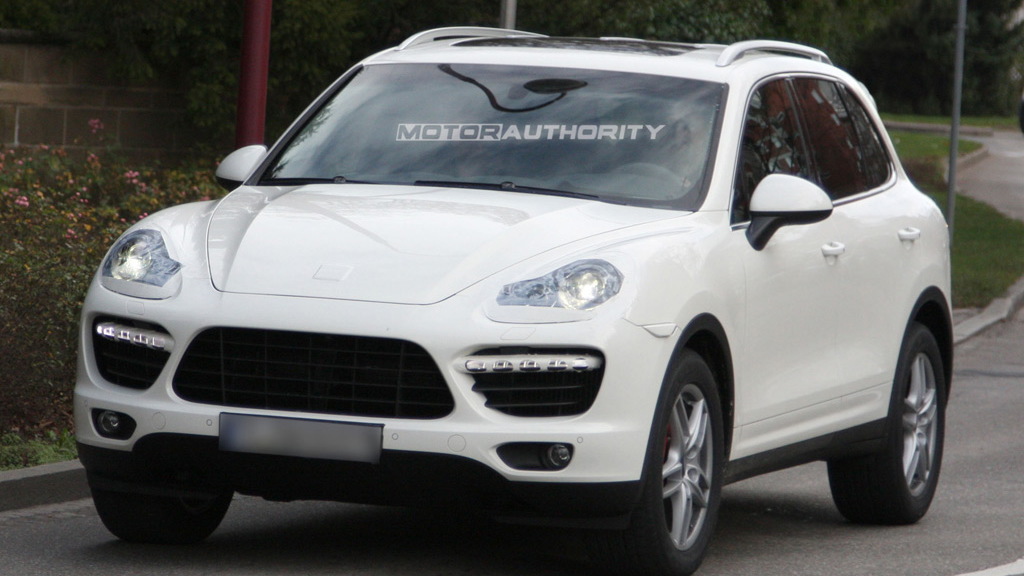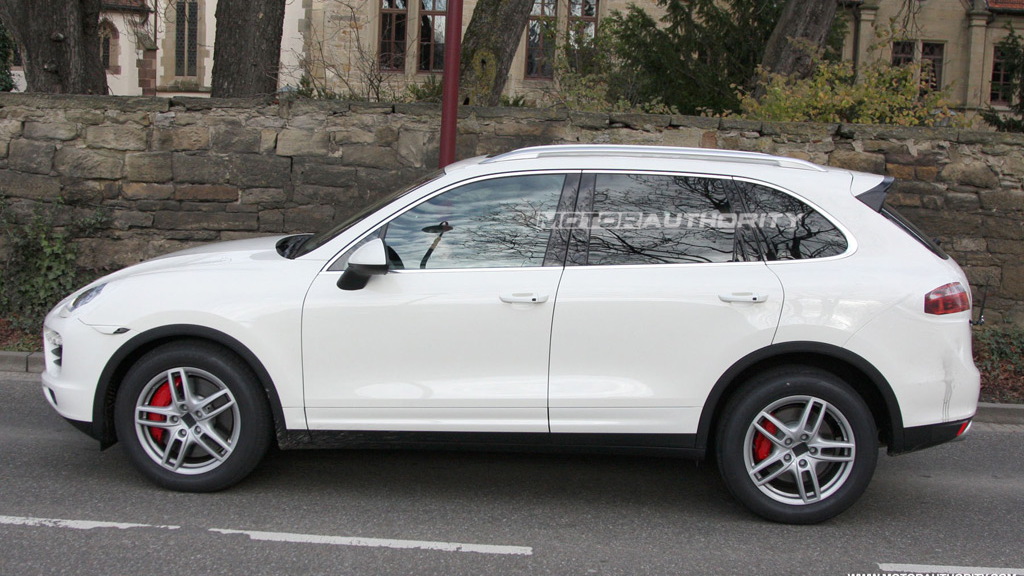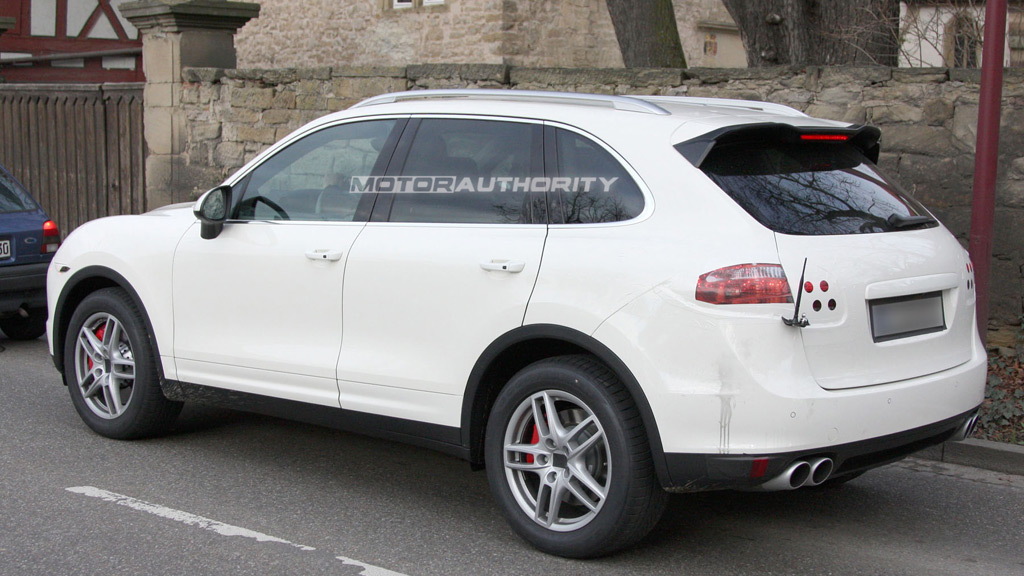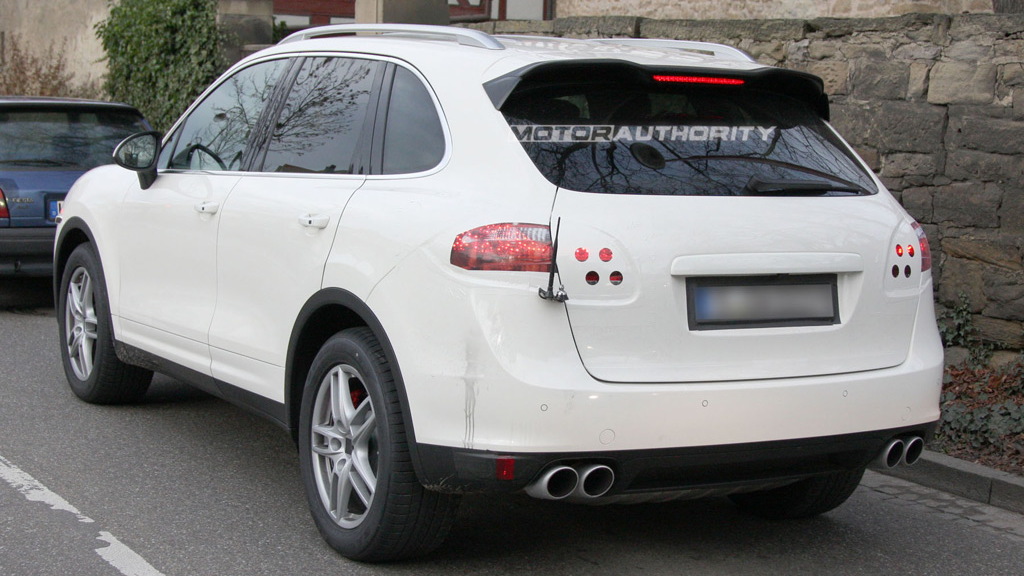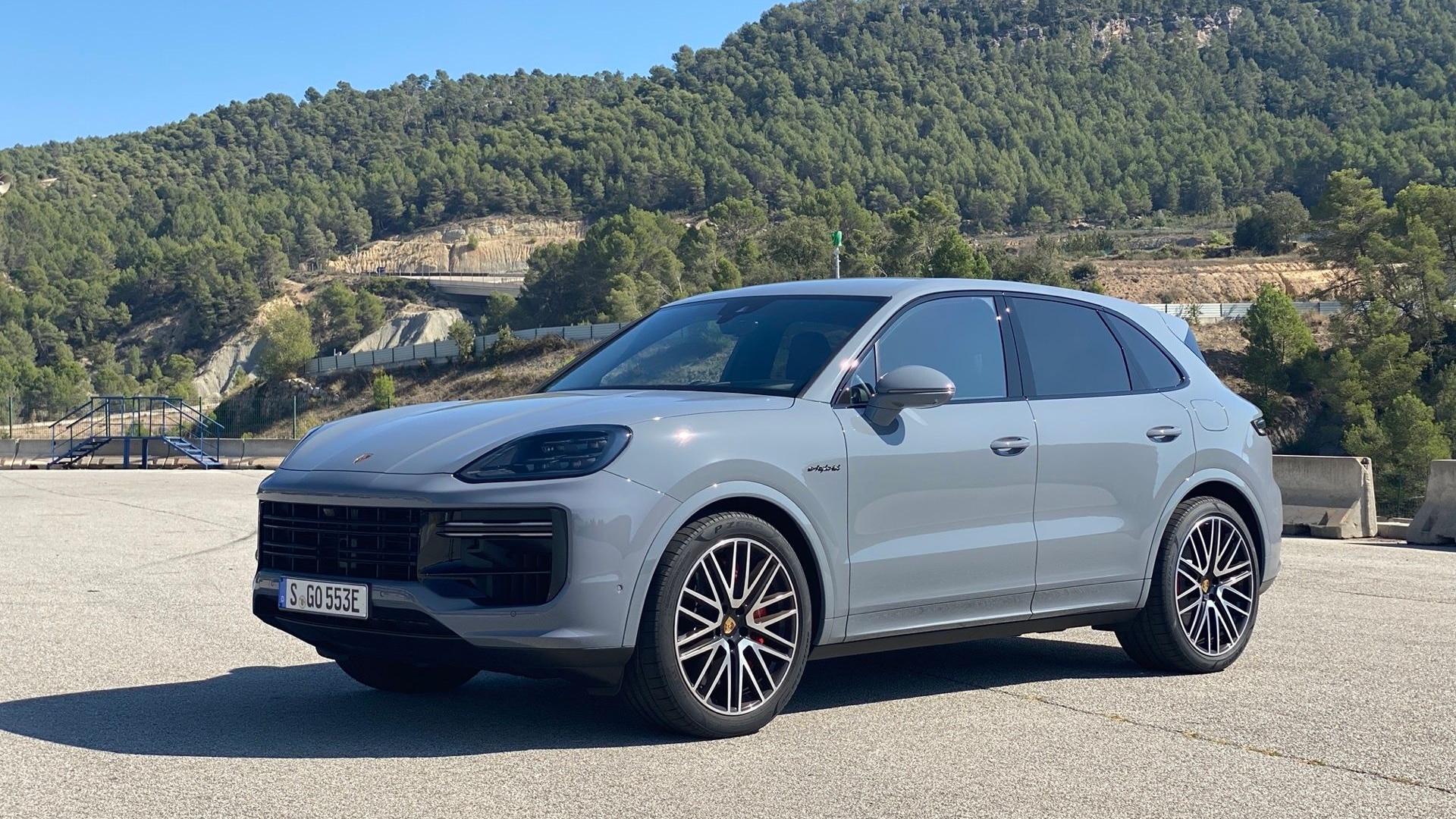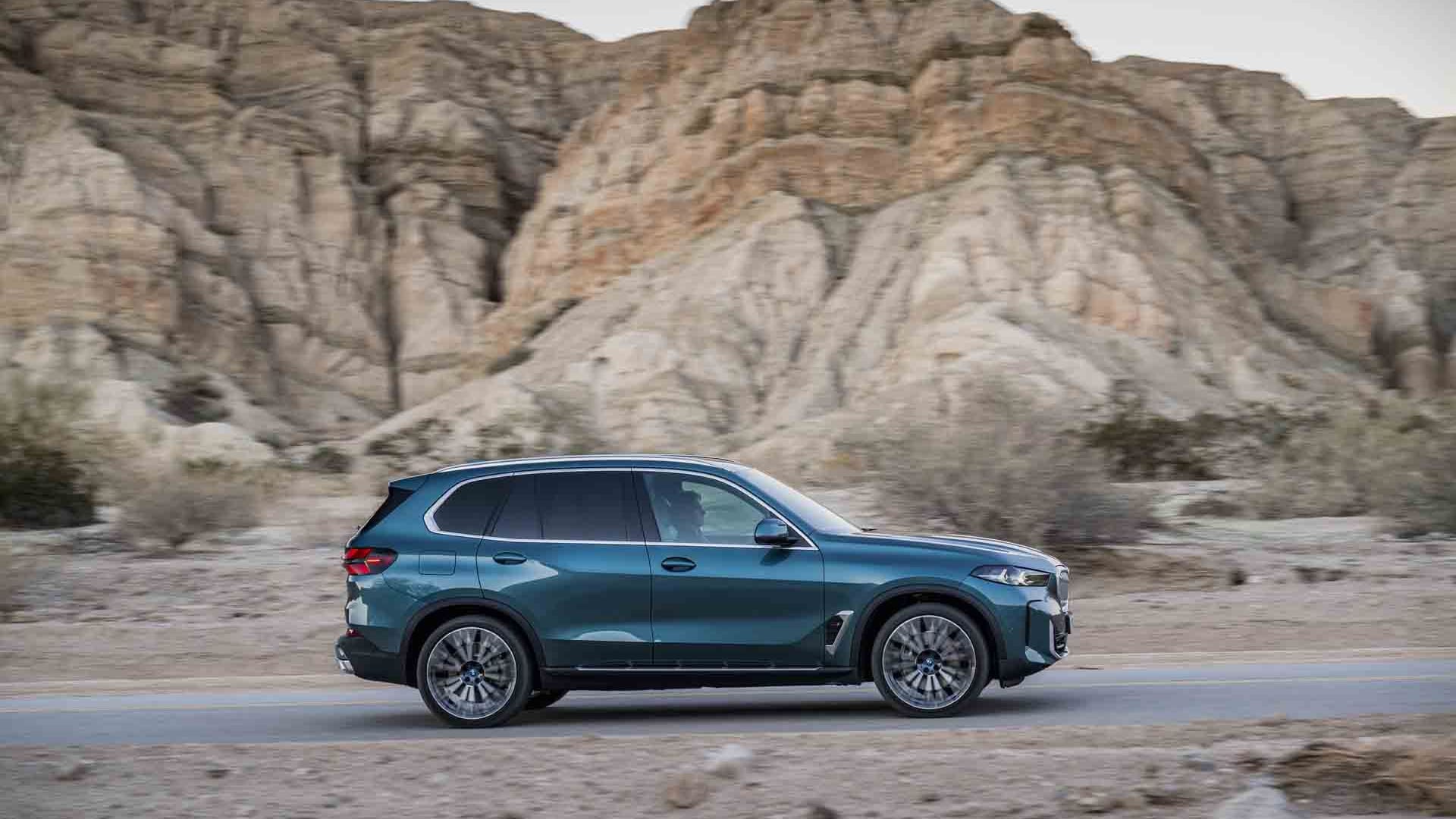Prototypes for Porsche’s next-generation Cayenne have been spotted testing in Germany on several occasions, revealing crucial details for the new SUV which is expected to go on sale by May 2010. First and foremost, we know the next Cayenne will be smaller than the current model although it will still share a common platform with the next-generation Volkswagen Touareg and Audi Q7, both of which are not expected to change significantly in size compared with current versions.
The smaller size of the new Cayenne agrees with Porsche’s desire to create a much more hardcore performance SUV than the current model, which has been criticized for being too heavy. The wheelbase will be shortened by almost 40 mm, while the height will be reduced by about 20 mm. Other details include a taller waistline and LED daytime running lights.
The interior spy shots also reveal some new details such as the redesigned center console with air vents now positioned to the sides of the navigation screen instead of at the top, as well as much fewer buttons than the current model. The design also shows a similarity to the interior of the Panamera, which was revealed recently.
Like the current model, the Cayenne will be built alongside the Touareg and Q7 in Volkswagen Group’s Bratislava plant in Slovakia. Unfinished Cayennes will then be transported to Porsche’s Leipzig plant for final assembly.
Once again both V-6 and V-8 gasoline engines will be on offer, as well as a turbodiesel option and a gasoline-electric hybrid powertrain to be shared with the Panamera sedan. Power will increase across the range over the current model’s levels but emissions and fuel-economy will be reduced.
Kicking off the range will be an Audi-sourced 3.0-liter V-6 turbodiesel with about 240 horsepower on tap. This will be followed by a 3.6-liter gasoline V-6 with 330 horsepower and a 400 horsepower 4.8-liter naturally aspirated V-8. The Cayenne S will get a 420 horsepower version of this V-8 engine, while a 500 horsepower-plus twin-turbocharged V-8 will be reserved for the Turbo model. Finally, the hybrid model will feature the 330 horsepower V-6 engine coupled with a 45 horsepower electric motor powered by nickel metal hydride batteries initially and lithium-ion units further down the track.
All engines will include Porsche’s new direct-injection technology, and some could even be matched to the automaker’s new dual-clutch gearbox. Expect to see 0-60 mph times of less than five seconds for top end models and top speeds in excess of 180 mph.
Look out for a world debut at the 2010 Geneva Motor Show in March next year.
